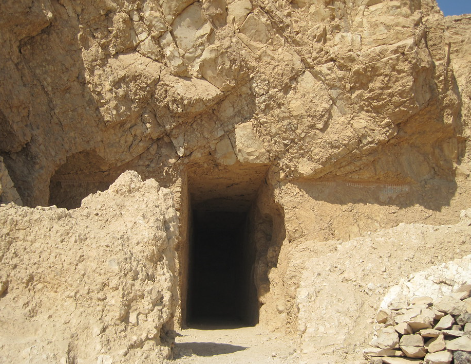
Come Up Screaming
Warning: This article has a pretty graphic image.
The Mysterious Case of the Screaming Mummy
When most people think of mummies, they picture serene, almost peaceful faces wrapped in linen. However, the “Screaming Mummy” of Cairo presents a different, eerie image: a face frozen in what appears to be an eternal scream.
This unusual mummy, referred to as CIT8, was discovered in the Theban Tomb 71, beneath the burial site of Senmut’s relatives. Senmut was the architect for Queen Hatschepsut in ancient Egypt. The mummy’s open mouth has puzzled archaeologists and scientists for decades. In a groundbreaking study, researchers combined modern technology with ancient clues to unravel the mystery behind this mummy’s startling expression.
Breaking Down Scientific Jargon
What is Paleoradiology?
Paleoradiology is the study of ancient remains using radiographic techniques like X-rays and CT scans. It allows scientists to see inside mummies without damaging them, revealing details about their health, mummification techniques, and even potential causes of death.
Understanding Embalming Ingredients
Juniper resin and frankincense were used in ancient Egypt not just for their pleasant scents but for their antibacterial and insecticidal properties. These substances helped preserve the body by preventing decay. Henna, another substance found on the mummy, was commonly used to dye hair and nails, indicating it was part of the cosmetic treatment given to the deceased.
A Closer Look at the Wig and Embalming Materials
One of the intriguing discoveries was the mummy’s wig. Through advanced techniques like Fourier-Transform-Infrared-Spectroscopy (FTIR) and X-ray-Diffraction-Analysis (XRD), the wig was found to be made from the midrib of date palms. It was coated with a black, crystalline substance identified as juniper resin and frankincense, both imported and expensive materials in ancient Egypt. The presence of these high-quality materials suggests that the mummification process was elaborate and costly.
Unveiling the Mystery with CT Scans
Using computed tomography (CT) scans, scientists were able to non-invasively examine the Screaming Mummy’s internal and external structure. The CT scans revealed that the mummy was likely a woman who died around the age of 48.1 years, plus or minus 14.6 years. Her teeth showed signs of wear and tear, and her joints had mild to moderate degeneration, indicating she was middle-aged. Interestingly, the mummy’s brain and internal organs were still in place, a rare find since many Egyptian mummies had their organs removed during the embalming process.
The Open Mouth: A Symbol of Pain or Something Else?
Cadaveric Spasm and Rigor Mortis

The mummy’s wide-open mouth has led to many theories. One possibility is cadaveric spasm, a rare form of muscular stiffening that occurs at the moment of death and can persist after death. This spasm could have fixed the mouth in an open position if the person died in a state of extreme pain or distress.
Let’s linger on that for a second. The mouth may have been fixed because the person died state of extreme pain or distress
Another theory involves rigor mortis, the stiffening of muscles after death, which could have caused the mouth to remain open if the jaw muscles were relaxed at the time of death.
Debunking Myths of Poor Mummification
Contrary to the belief that an open mouth indicates poor mummification, the study found that the mummy was treated with high-quality embalming materials. This suggests that the embalmers were not careless; rather, the open mouth could be a result of the physical state at the time of death and subsequent natural processes.
Understanding Ancient Practices Through Modern Lenses
Imagine finding a time capsule that reveals how people lived thousands of years ago. That’s what studying mummies is like. By using modern technology to look inside these ancient time capsules, scientists can learn about the health, culture, and practices of people who lived long before us. For instance, the use of juniper resin and frankincense for preservation is similar to how we use preservatives in food today to keep it from spoiling.
Why This Research Matters
Understanding the mummification process and the substances used not only tells us about ancient Egyptian culture but also provides insights into early medical practices. The preservation techniques can inform modern science about natural preservatives and antibacterial substances.
What do you think?
- What other mysteries of ancient Egypt do you think could be solved with modern technology?
- How do you think the use of natural preservatives in ancient mummification compares to modern preservation techniques in food and medicine?
Conclusion
The study of the Screaming Mummy of Cairo is a fascinating blend of history, archaeology, and modern science. By combining CT scans with advanced scientific analyses, researchers have uncovered new insights into the life and death of this ancient woman. Her open mouth, once a symbol of mystery, now tells a story of advanced mummification techniques and the potential circumstances of her final moments. This research not only helps us understand the past but also connects it to our present, highlighting the enduring quest for knowledge and preservation.
Join the Science Adventure:
Stay updated with the latest discoveries in science! Our weekly newsletter is perfect for teachers and science enthusiasts. Get the newest research, major breakthroughs, and fascinating stories delivered to your inbox for free. Enhance your teaching and learning. Subscribe today! If you liked this blog, please share it! Your referrals help This Week in Science reach new readers.



